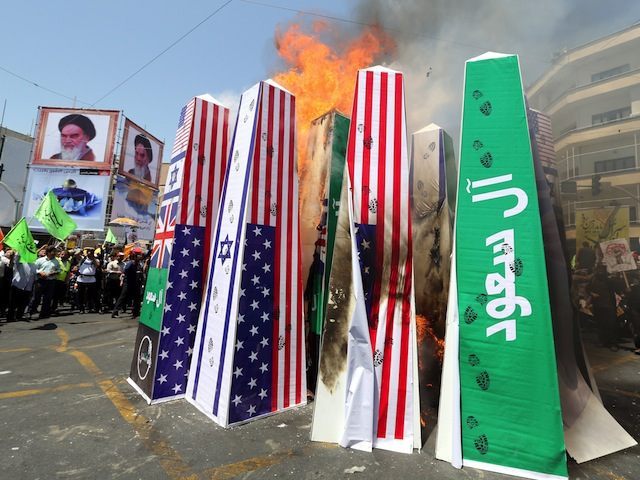The New York Times reports that Iran has “no plot to destroy Israel.”
Never mind the fact that Iran’s so-called “Supreme Leader,” Ayatollah Ali Khamenei, has just published a book about how the regime hopes to do exactly that. Never mind that last year, he tweeted answers to “9 key questions about the elimination of Israel.” Never mind that Mohammad Reza Naqdi, the head of the Basij militia of Iran’s Reovlutionary Guards, declared in March that “erasing Israel off the map” was “non-negotiable” in the ongoing talks toward a nuclear deal with the west.
No–there is no such plot, says the New York Times, and it knows this because a Jewish journalist from the Forward, a left-wing Jewish publication, interviewed several high-ranking Iranian officials who seemed to have no real objection to Israel’s existence. The fact that the Forward was even allowed into the country was intriguing, and apparently involved lengthy negotiations with the regime.
The New York Times‘ report on the Forward interview conjures thoughts of George Bernard Shaw’s whitewash of the Stalinist show trials in the 1930s–or worse.
Actually, the article, by Larry Cohler-Esses, is not the craven apology for the regime that the Times‘ Rick Gladstone makes it out to be.
Certainly Cohler-Esses seeks out voices of dissent from the official line who willing to be quoted publicly. His goal is to show readers in the U.S. that Iran is not monolithic, even within the ruling hierarchy itself. If the regime wished to send a message that might soften American impressions, using Cohler-Esses as a conduit, it succeeded. But at no point in his article does he deny that the regime wants to destroy Israel.
In fact, Cohler-Esses writes the opposite of what Gladstone suggests:
As for that Zionist entity where some 6 million Jews live, former president Mahmoud Ahmadinejad’s avowal that Israel “must vanish from the page of time” or, as it has been inaccurately translated , “wiped off the map” (either way, an unequivocal threat) continues to be the policy of the Islamic Republic as articulated in varied semantic formulations by its supreme leader, Ali Khamenei, a figure whose authority trumps that of Iran’s elected government. [emphasis added]
At one point, Cohler-Esses even interviews one reformist cleric who insists Israel “must be destroyed” if it does not change its policies (whatever that means).
It is not Cohler-Esses distorting reality, under threat of imprisonment or censorship, but the Times itself.
The Times adds that the Forward‘s depiction of Iran differs from that of “a number of Jewish-American advocacy groups that consider Iran an enemy state.”
So it is the Jews who are to blame for that impression, not the U.S. government and least of all Iran itself, with “Death to America” and the rest.
In sum, the Times‘ account of the Forward article is not only misleading, but driven by brazen antisemitism and a willful disregard of the known facts about the Iranian regime, its past and present behavior towards both the U.S. and Israel, and its official ideology.
The “paper of record,” which did so much to bury news of the Holocaust during the Second World War, now tries to cover up the Iranian regime’s genocidal intentions, and blames American Jews for false impressions of hostility. It owes the Forward–and its own readers–an apology.

COMMENTS
Please let us know if you're having issues with commenting.